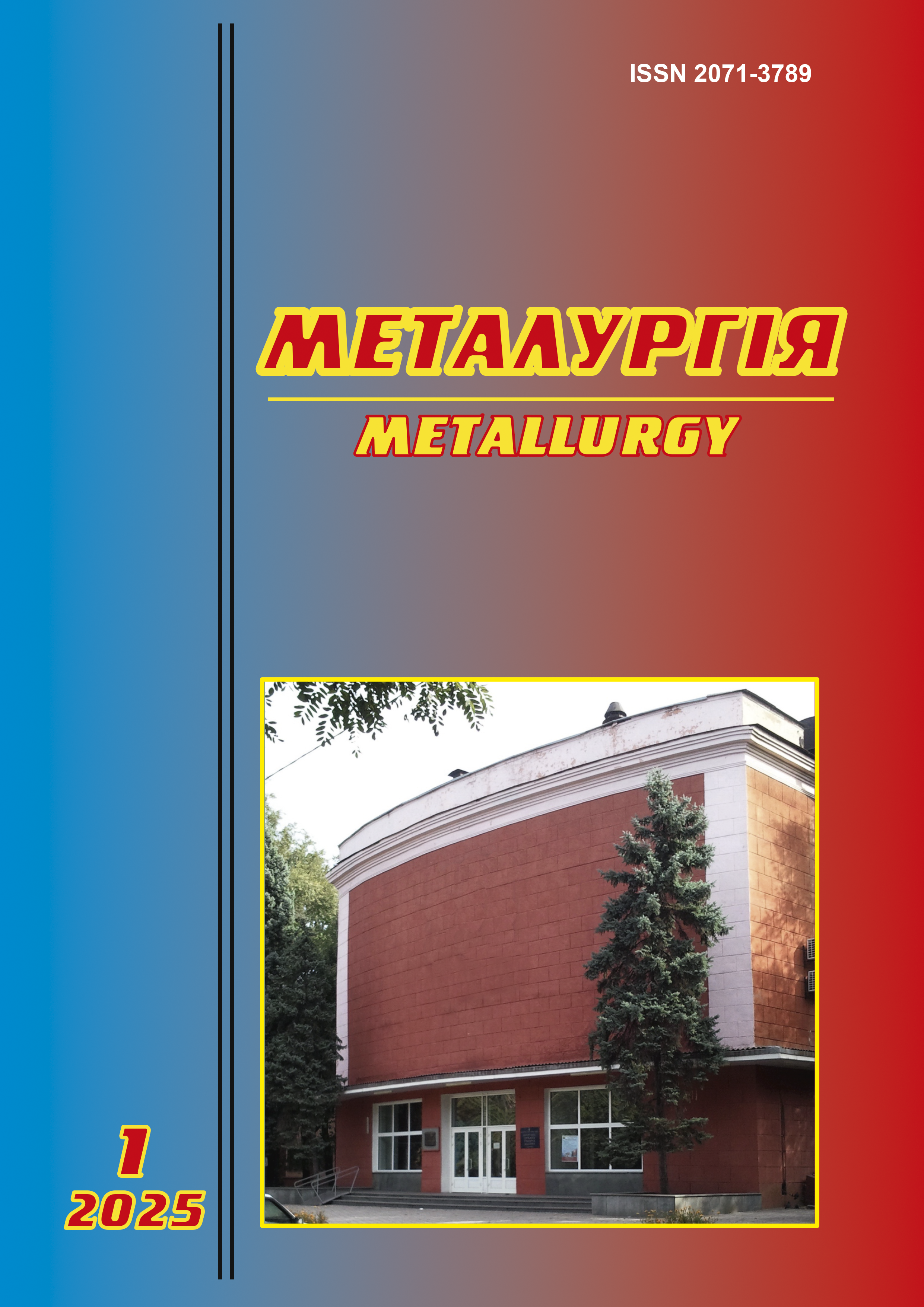RESEARCH ON THE INFLUENCE OF THE SCRAP PORTION ON THE OPTIMAL PARAMETERS OF THE OXYGEN-CONVERTER MELTING
Abstract
The study investigates the influence of the proportion of scrap and other charge materials on the optimal parameters of oxygen-converter smelting based on a thermodynamic analysis of the “metal-slag-gas” system using the Gibbs chemical potential method. Utilizing the “Excalibur” software suite, experimental-computational modeling and systematic analysis were performed on a set of interrelated parameters of oxygen-converter smelting. These include pressure (including ferostatic metal pressure), pig iron temperature, temperature and chemical composition of the steelmaking bath in the converter, slag regime, initial mass of steel and pig iron scrap, refractory lining erosion, material preheating, oxygen mass for smelting, flux material mass, and a range of other technological and geometrical parameters of the oxygen converter.Using the simplex method of linear programming, parameter optimization of the oxygen- converter smelting process was conducted for several scenarios. Graphical dependencies were developed showing the impact of material mass fractions–especially scrap–on the content of chemical elements in the final semi-product and slag. The technology of oxygen- converter smelting with increased scrap content and reduced molten pig iron in the charge materials was analyzed. The influence of the physical and chemical properties of charge materials on the thermal performance of converters was determined, along with the feasibility of partially replacing pig iron with scrap to save resources and enhance the technical and economic efficiency of smelting.This modified technology, featuring a higher share of scrap and lower share of molten pig iron, is recommended for producing low-carbon steel grades. It is concluded that achieving high-quality steel from converter semi-products requires post-furnace treatment with thorough deoxidation and desulfurization. Additional conclusions were drawn regarding the practical application of the study’s findings.
References
2. Smirnov O. M., Kharchenko O. V. Differential assimilation coefficients (DAC) in computer steelmaking control systems. Proc. The 9th EOSC European Oxygen Steelmaking Conference, 6th CTSI Clean Technologies in the Steel Industry, October 17 –21, 2022, Aachen, Germany. https://eosc-ctsi.com/program.html.
3. Синяков Р. В., Харченко О. В. Програма «EXCALIBUR» – можливості та перспективи використання у металургійному виробництві. Зб. наукових праць ДонНТУ. Серія: Металургія. 2005. Вип 102. С. 82-91.
4. Харченко О. В., Лічконенко Н. В. Комп’ютерна програма «Excalibur». Свідоцтво України про реєстрацію авторського права на твір № 111007 від 12.01.2022р.
5. Харченко О. В., Пономаренко О. Г., Корзун Є. Л. Термодинамічна модель багатокомпонентної конденсованої фази. Металургійна та гірничорудна промисловість. 2004. № 8. С. 135-139.
6. Tao D. P. Prediction of the thermodynamic properties of multicomponent liquid alloys by binary infinite dilute activity coefficients. Metallurgical and Materials Transactions B. 2001. Vol. 32. P. 1205-1211.
7. Харченко О. В. Термодинамічне моделювання системи «метал-шлак-газ» з урахуванням ентальпійного теплового балансу. Метал та лиття України. 2005. № 6. С. 13-17.
8. Храпко С. О. Кінетика взаємодії фаз у сталеплавильному агрегаті. Матеріали XI Міжнародної конференції «Сучасні проблеми електрометалургії сталі». 2001. С. 35-37.
9. Харченко О. В. Диференціальні коефіцієнти засвоєння в комп'ютерних системах проєктування і управління плавкою сталі. Метал та лиття України. 2021. Том 29. № 2. С. 23-30.
10. Синяков Р. В. Дослідження поведінки фосфору у кисневому конвертері з використанням програмного комплексу «DesigningMelt». Метал та лиття України. 2016. № 11-12. Том 282-283. С. 13-22.
11. Синяков Р. В., Харченко О. В. Автоматизоване проектування та керування киснево-конвертерною плавкою. Металургійна та гірничорудна промисловість. 2018. № 3. С. 14-26.

 ISSN
ISSN 


